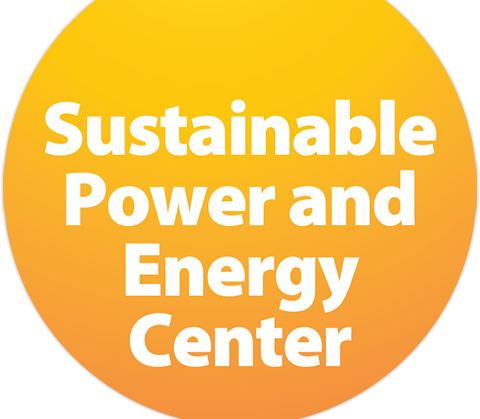Energy Applications of Ionic Materials
Energy Applications of Ionic Materials
Energy Applications of Ionic Materials
Friday, March 16th, 2018
Presentation time: 10-11 AM (including Q&A session)
Venue: CMRR Jack Keil Wolf Auditorium
Prof. Douglas R MacFarlane
Austrailian Centre fo Electromaterials Science,
School of Chemistry, Monash University
ABSTRACT :
Ionic materials offer a unique combination of properties that are particularly valuable as electrolytes in electrochemical processes and devices. [1] Their low vapour pressures, extended electrochemical stability and unusual solvent properties create new possibilities in electro-synthesis, as well as device operation. In this presentation, we discuss some recent examples in the field of sustainable energy generation and storage, highlighting the important role of computational studies in supporting these developments.
Efficient production of hydrogen or ammonia from renewable energy represents an important technology for future means of global transportation of energy. However, the hydrogen evolution reaction (HER) and the nitrogen reduction reaction (NRR), coupled with the oxygen evolution reaction (OER), are of relatively low efficiency compared to other energy storage mechanisms and this is currently limiting these technologies. In this talk, we will discuss recent progress in both of these areas [2] based on developments in ionic materials.
In other contexts, ionic materials are having an impact as energy device electrolytes. Important recent examples of this are emerging in the fields of (i) sodium batteries, where inorganic-organic salt mixtures are supporting impressively long cycle life (ii) double layer super-capacitors [3] and (iii) thermo-electrochemical devices – power generating devices based on a temperature gradient and an electrochemical Seebeck effect – where unique combinations of redox couples and the unusual solvation environment offered by certain ionic materials are producing record-high Seebeck coefficients and thermopower.[4]
REFERENCES:
(1) Ionic liquids and their solid-state analogues as materials for energy generation and storage. MacFarlane, D. R.; Forsyth, M.; Howlett, P. C.; Kar, M.; Passerini, S.; Pringle, J. M.; Ohno, H.; Watanabe, M.; Yan, F.; Zheng, W. Nature Reviews Materials 2016, 15005.
(2) Electro-synthesis of ammonia from nitrogen at ambient temperature and pressure in ionic liquids. Zhou, F.; Azofra, L. M.; Ali, M.; Kar, M.; Simonov, A. N.; McDonnell-Worth, C.; Sun, C.; Zhang, X.; MacFarlane, D. R. Energy Environ. Sci. 2017, 10, 2516-2520.
(3) Supported Ionic Liquid Gel Membrane Electrolytes for Flexible Supercapacitors. Zhang, X.; Kar, M.; Mendes, T. C.; Wu, Y.; MacFarlane, D. R. Adv. Energy Mater., 2018 170270
(4) Thermo-electrochemical cells for waste heat harvesting - progress and perspectives. Dupont, M. F.; MacFarlane, D. R.; Pringle, J. M. Chem. Commun. 2017, 53, 6288-6302.
BIOSKETCH:
Professor Doug MacFarlane is an Australian Laureate Fellow at Monash University in Melbourne, Australia. He is also leader of the Energy Program in the Australian Centre for Electromaterials Science. He has published more than 650 papers and 30 patents, including papers in Science, Nature, and Nature Materials (cited more than 39,000 times, h-index of 90). His interests include ionic liquids as solvents in fields including materials synthesis, electrochemistry, energy chemistry, green chemistry and biotechnology. Professor MacFarlane’s group has contributed cutting edge work to all of these areas including recent papers on energy materials in Nature Materials, Energy and Environmental Science
Nature Communications and Advanced Materials. He has been founder of spin-out companies from his research group in the supercapacitor field and more recently in the chemical energy storage field. Professor MacFarlane was elected to the Australian Academy of Science in 2007 and the Academy of Technological Sciences and Engineering in 2009. He was awarded the Australian Academy’s Craig Medal in 2018 for lifetime contributions to Chemistry and the Royal Society of Chemistry’s Australasian Lectureship in 2015. He is currently a member of the Editorial Advisory Boards of Chemical Communications, Green Chemistry, ACS Sustainable Chemistry and Engineering, ChemSusChem and Cryobiology. He is an Adjunct Professor at the University of Alabama, an International Fellow of the Queens University Belfast, and a Visiting Professor of the Chinese Academy of Sciences.
* Please email Unjong Lee or Pritesh Parikh for further questions and signing up for individual meetings.
Unjong Lee: unjonglee@ucsd.edu
Pritesh Parikh: priteshparikh@eng.ucsd.edu


